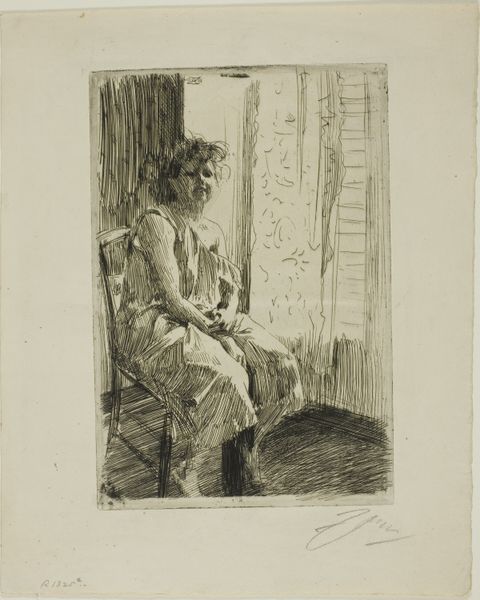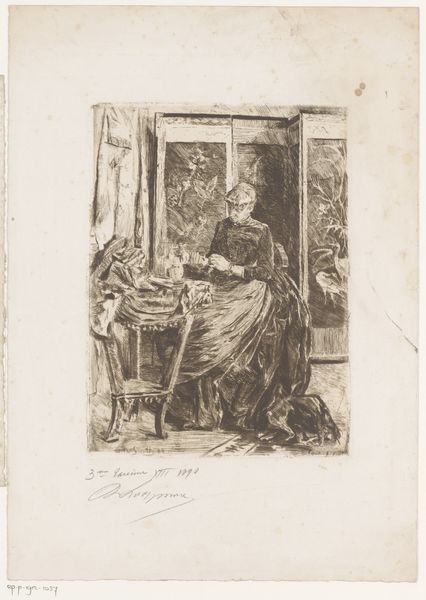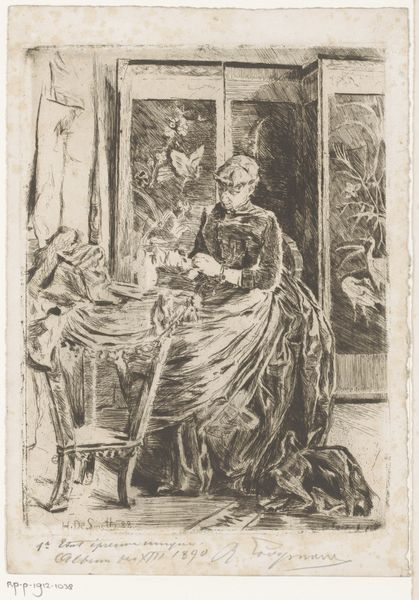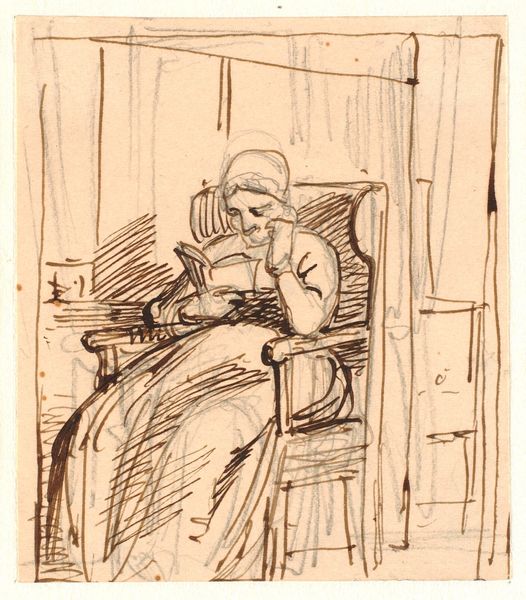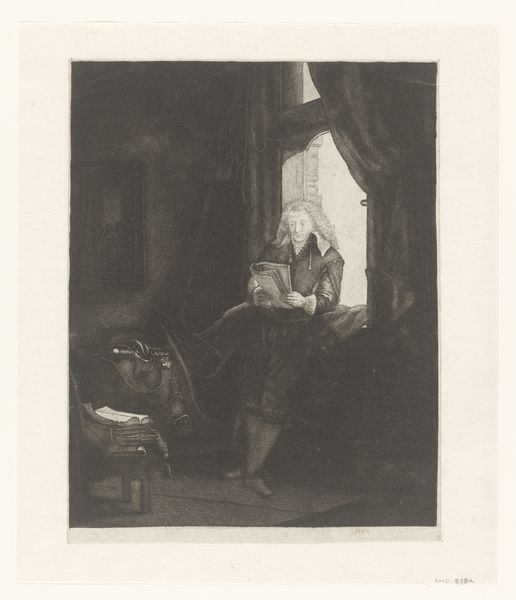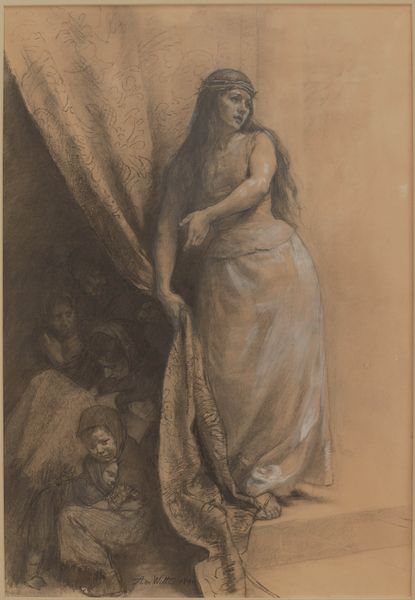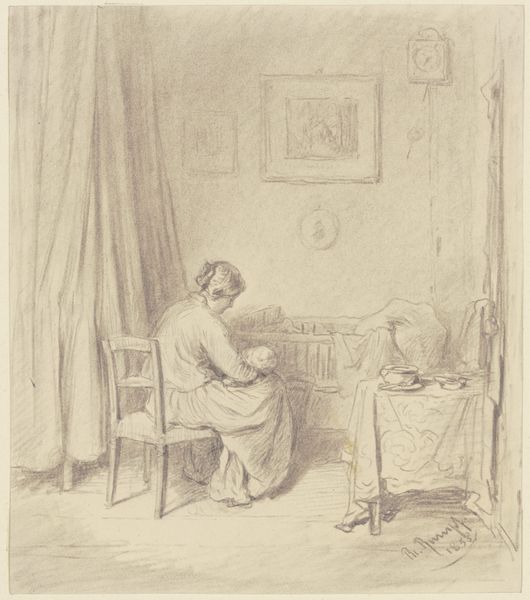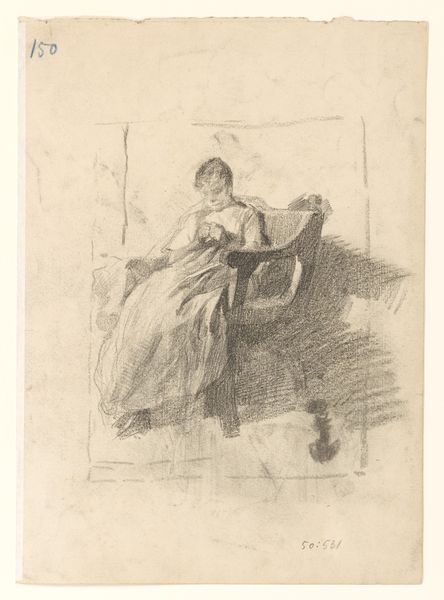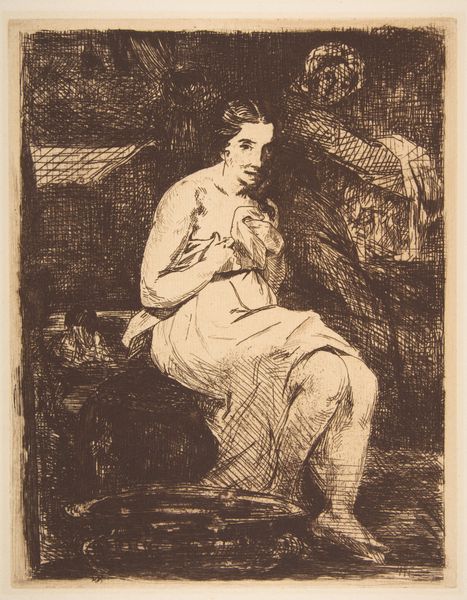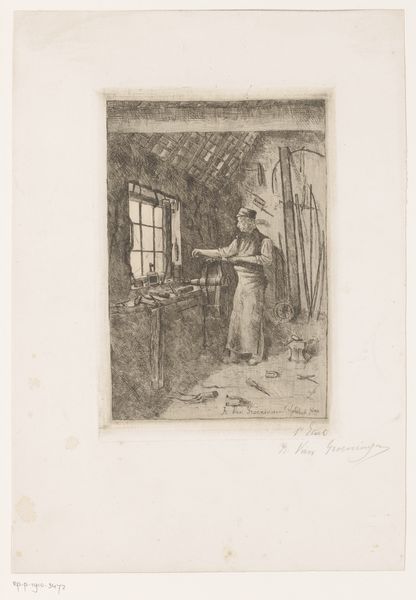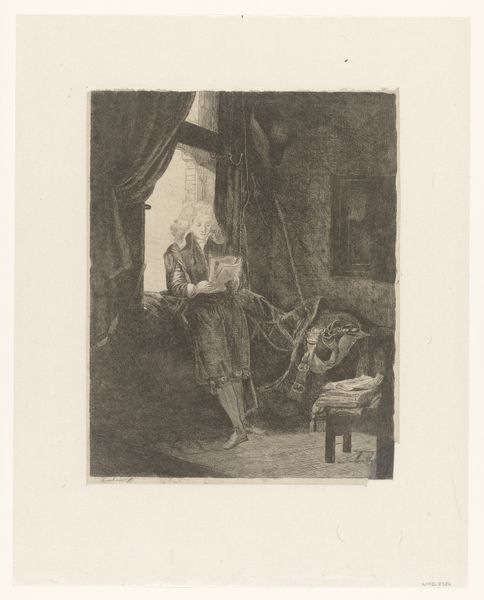
drawing, watercolor
#
portrait
#
drawing
#
watercolor
#
romanticism
#
cityscape
#
watercolor
Copyright: Public Domain: Artvee
Editor: This is Thomas Sully's "Woman at a Window," created sometime between 1810 and 1820 using watercolor. It has a very contemplative and melancholic feel, almost dreamlike with the muted colors. What aspects of its composition stand out to you? Curator: Note how Sully masterfully uses the single hue to unify the pictorial space. The tonal variations, achieved through the watercolor medium, create depth and texture. Observe, for example, the differing levels of saturation in the curtains versus the woman's dress. How does that guide your eye through the artwork? Editor: I see how the lighter tones around the window draw attention to her face, which is the focal point, and create a sense of illumination, almost as if her face is glowing. What's the impact of that deliberate composition choice? Curator: Indeed, light serves as both illumination and compositional device, enhancing the Romantic spirit. But let's also consider the spatial construction. The architecture outside the window contrasts with the intimacy of the interior. The gaze towards that space gives us pause to ponder the exterior life beyond. Are we invited in, or are we on the outside, looking into her world? Editor: I didn’t initially consider the contrast. I was so focused on the woman. I guess both, in a way? I'm curious, does your Formalist perspective prioritize the aesthetic structure and technique over historical context? Curator: The beauty of Formalism is that it allows us to appreciate an artwork purely for its intrinsic qualities, before potentially overlaying historical or cultural context. However, it doesn't exclude those things entirely. It simply privileges an examination of the visual language first. Editor: I see that. This exercise really helped me look more closely at how all the elements within the artwork communicate together. Thank you! Curator: And for me, our dialogue has clarified the subtle interplay of light, shadow, and perspective, further reinforcing the expressive potential of Sully's artistic choices.
Comments
No comments
Be the first to comment and join the conversation on the ultimate creative platform.
